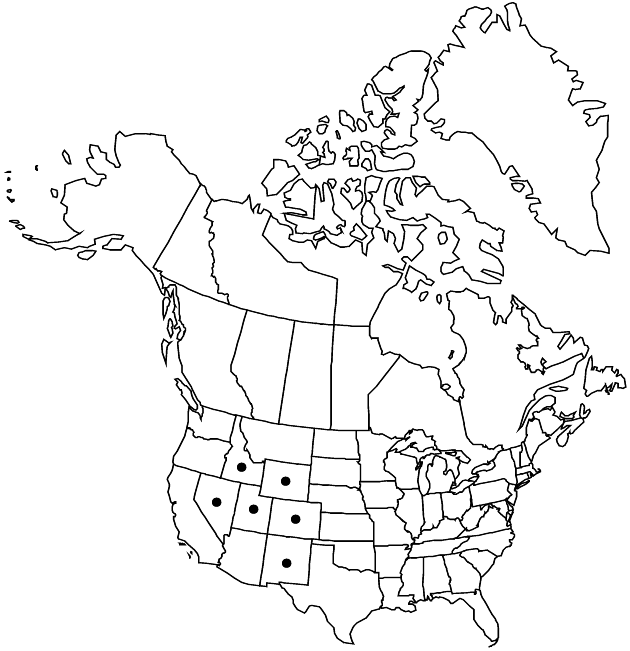Packera crocata
Phytologia 49: 46. 1981.
Perennials, 20–60+ cm; perennating bases horizontal to ascending (relatively long and stout). Stems usually 1, rarely 2–3, clustered, glabrous. Basal leaves (and proximal cauline) petiolate (petioles narrow); blades narrowly lanceolate or ovate to oblong-ovate, 20–60+ × 10–40+ mm, bases abruptly contracted to tapering, margins subentire to crenate-dentate. Cauline leaves gradually reduced (sessile, weakly clasping; lanceolate to oblong or sublyrate, often pinnately lobed). Heads 7–15+ in open, corymbiform arrays. Peduncles ebracteate or bracteate (bractlets inconspicuous), glabrous. Calyculi 0 or inconspicuous. Phyllaries 13 or 21, light green (or tips cyanic), 4–8 mm, glabrous. Ray florets 8 or 13; corolla laminae (deep yellow to orange-red) 6–8+ mm. Disc florets 60–80+; corolla tubes 4.5–5.5 mm, limbs 2.5–3.5 mm. Cypselae 1–1.5 mm, glabrous; pappi 3–5 mm. 2n = 46.
Phenology: Flowering early Jul–mid Aug.
Habitat: Wet meadows, along trails, rocky outcrops
Elevation: 1800–3500 m
Distribution

Colo., Idaho, Nev., N.Mex., Utah, Wyo.
Discussion
Packera crocata is characterized by deep yellow to reddish orange corollas. Some collectors have noted that there may be evidence for hybridization between P. crocata and P. dimorphophylla; the relationship between the two species needs further study.
Selected References
None.